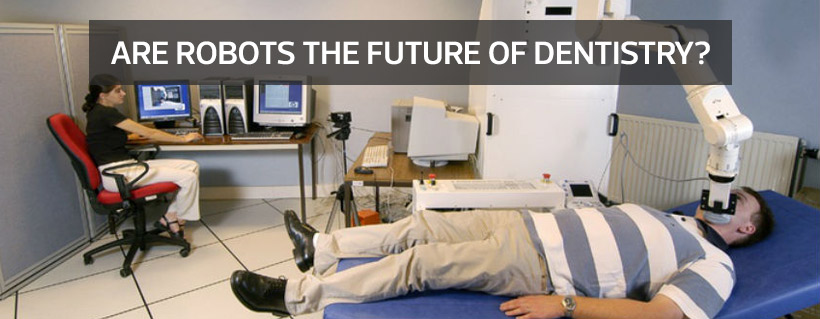Menu

Date: 4th Dec. 2017
In today’s fast-paced world where time is money and technology is at its zenith, a new branch of technology has been embraced by medical science. A branch wherein a marriage of the two ensures the best of both worlds. In this article, we will talk about the magical world of robotics that is staring at us right in the face. In a not so distant future, robots and humans will work hand-in-hand to increase productivity, lower costs, and increase efficiency of in many fields including dentistry. That would be the beginning of a new era for the human race and ultimately uplift the quality of life for everyone.
Let’s see how the concept of robots came into being.
The term ‘robot’ was first coined by Czech playwright Karel Capek in the year 1921. The term ‘robotics’ was first used by the author Isaac Asimov in his science fiction novel ‘I, Robot’. Robotics is the branch of technology that deals with design, construction, operation, and application of robots as well as computerised systems for their control, sensory feedback, and intelligence processing.
The benefits of robotics are mind boggling! Imagine an era where robots are employed to perform tasks in dentistry which are being performed by dentists today. The advantages are multifold. For example, it can eliminate the chance of infection between a doctor and a patient.
Moreover, dentists with spinal pathologies and deformities would still be able to treat patients by using robots in their clinics. The use of robotics would ensure an age where the treatments are performed more precisely and quickly, thus increasing the success percentage in many treatment procedures.
Now, let us gain an insight into this new marvel of science that has countless possibilities in store for the betterment of mankind.
Let us discuss robotic technologies from Japan and how they benefitted dental trainee students and the population at large. This is the story of a dental robot named SIMROID.
SIMROID is a robot that has been developed by the Japanese to improve the skill of dental trainee students while performing dental procedures. In case of inexperienced students, the chances of error while working on patients is very high. It is also very risky for people to surrender themselves to inexperienced dentists. Keeping these views in mind, scientists created this robot which looks like a petite Japanese woman dressed in a pink sweater. The robot’s teeth are fitted with sensors that make the robot cry out when the dentist’s equipment touches the virtual nerves. This duplicates the situation for the rookie dentist as in a real-life situation and here you can safely say that there’s no damage done. This robot is an upgrade to SIMULOID, a robot created in 2007.
SIMROID has sensors in and around the mouth that allow it to feel stimulated pain and discomfort to which it reacts negatively, helping the students realise their folly. Moreover, it has artificial skin instead of silicone that tears easily when asked to open the mouth wide. The robot can even rate the treatment using 2 cameras that monitor the students’ moves and the sensor readings recorded through the procedure. This robot is a product of Nippon Dental University Kokoro with Morita.
This year, a dental implant was placed into the patient’s mouth in China using robots. This was done primarily to improve the accuracy of the procedure and also to meet the shortage of dentists in the region. The placement of the implant was quite satisfactory according to worldwide standards and it heralded a new age for implant treatments all over the world. The day when robots place implants in many countries worldwide is not very far off.
Presently, a mechanical guided system or template drill guided system is used to place implants as accurately as possible. In addition, a new system of computer assisted surgeons has been developed. Pre-operative 3 dimensional views to enhance raw images obtained from the patient are first analysed before the operation. This enables dentists to get familiar with the patient’s anatomy in advance.
While performing the implant surgery, intra-oral support is used, which aids in both navigation and decision making. This leads to the best possible implant placement, that too without the dentist touching the patient, hence ensuring zero chance of infection. During the procedure sets of surgical marker emitters are designed in different patterns for tracking movements of surgical instruments and patient position. These provide 3D orientation of surgical instruments and real time trajectory display from the patient’s 3D imaging data.
Thus, on a concluding note, robotics holds much promise for the human race. Here we have discussed about the only two developments in this field but there are many more new applications to be discussed in the subsequent articles.


| PRODUCTS | QTY | PRICE | VALUE in INR |
|---|
| PRODUCTS | QTY | PRICE | VALUE in INR |
|---|